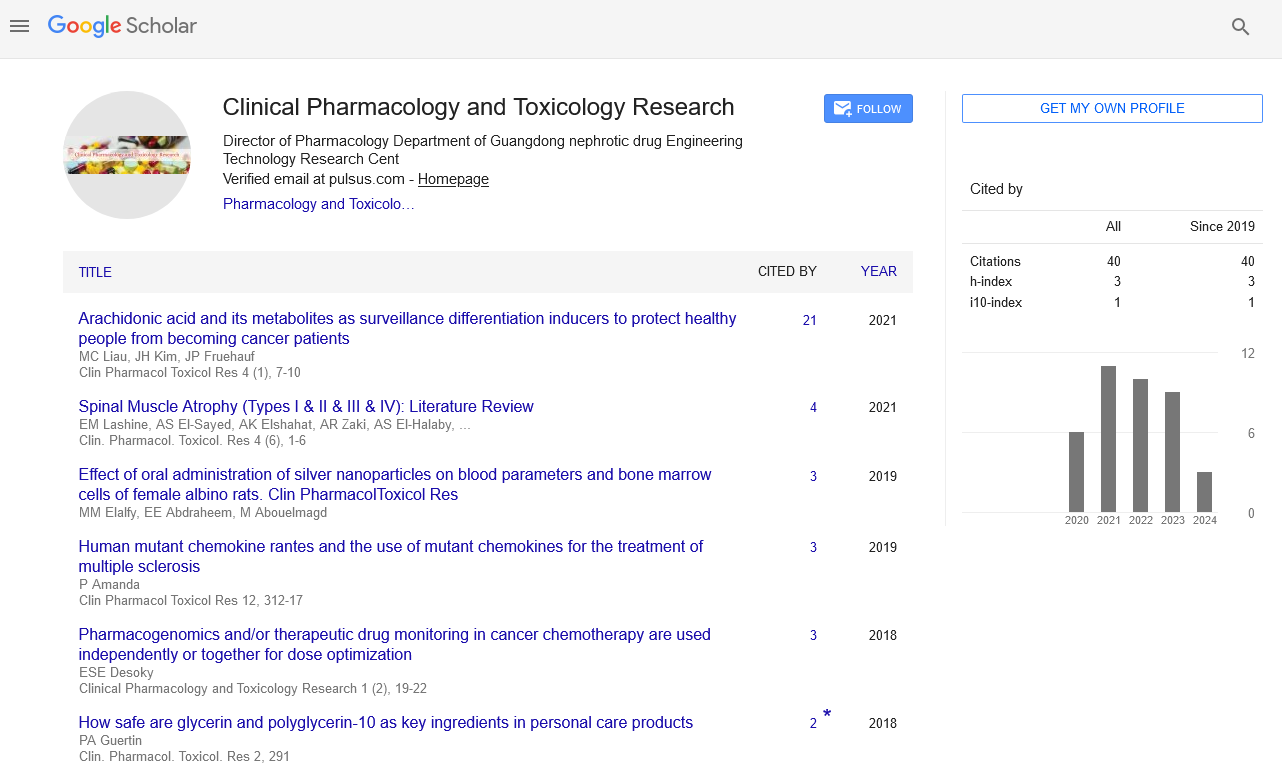Assessment of drug safety
Received: 03-May-2021 Accepted Date: May 18, 2021; Published: 25-May-2021
Citation: Carleton R. Assessment of drug safety. Clin Pharmacol Toxicol Res. 2021;4(3):6.
This open-access article is distributed under the terms of the Creative Commons Attribution Non-Commercial License (CC BY-NC) (http://creativecommons.org/licenses/by-nc/4.0/), which permits reuse, distribution and reproduction of the article, provided that the original work is properly cited and the reuse is restricted to noncommercial purposes. For commercial reuse, contact reprints@pulsus.com
Description
Drug safety or pharmacovigilance experts monitor, the unexpected side effects of various medicines during clinical trials and also when the medicine is marketed. No medicine can be 100% safe. Drug safety is the science of detection, assessment, understanding and prevention of side effects which helps us to understand even more about the risks and benefits of a medicine. Drug safety scientists collect and evaluate the information from patients and also healthcare professionals while working to identify novel information regarding the use of medicines and any side effects experienced by patients.
Safety monitoring of medicines may be a continuous process, it's performed during clinical trials when medicines are developed, once medicines are launched and throughout the whole period where a drugs is available for patients to use. Medicines are often taken by large number of people. Side effects that are rare can sometimes only be detected when a medicine has been marketed.
The techniques wont to monitor medicine safety range from the investigation of individual case reports, to data processing in large databases and epidemiology. This information is employed to make sure the safe use of medicines and stop harm to patients, and sometimes leads to an update of the side effects for a drug detailed in the leaflet.
• Reporting of individual case reports to regulatory agencies
• Preparation of summaries of product safety at specified intervals
• Preparation of risk management plans which contain actions (which can include epidemiological studies) to further characterize risks associated with medicines and ensure actions are in place to minimize risks when they have been detected.
Some companies employ specialist pharmacovigilance professionals to make sure that drug safety is carefully monitored and thought of , whereas in other companies the role are often combined with medical information teams.
A Serious Adverse Event (SAE) is defined together that leads to death, is life-threatening, requires inpatient hospitalization or prolongation of existing hospitalization, leads to persistent or significant disability or incapacity, or may be a congenital anomaly or birth defect. Investigators conducting pharmaceutical industry–sponsored studies should remember that companies may have their own, more strict definition of SAEs.
Pharmacogenetic Effect
Demonstrating a pharmacogenetic effect can affect drug safety and therefore the use of pharmacotherapy. The impetus for a selected pharmacogenomic investigation may start with the will to define the explanation for a specific response or may stem from the invention of a gene with functional properties or associations that suggest its involvement within the therapeutic response.
Information received from patients and healthcare providers via Pharmaco-Vigilance Agreements (PVAs), also as other sources like the medical literature, plays a critical role in providing the info necessary for pharmacovigilance to take place. In fact, so as to plug or to check a pharmaceutical product in most countries, adverse event data received by the license holder must be submitted to the local drug regulatory authority.
Ultimately, pharmacovigilance cares with identifying the hazards related to pharmaceutical products and with minimizing the danger of any harm which will come to patients. Companies must conduct a comprehensive drug safety and pharmacovigilance audit to assess their compliance with worldwide laws, regulations, and guidance.





